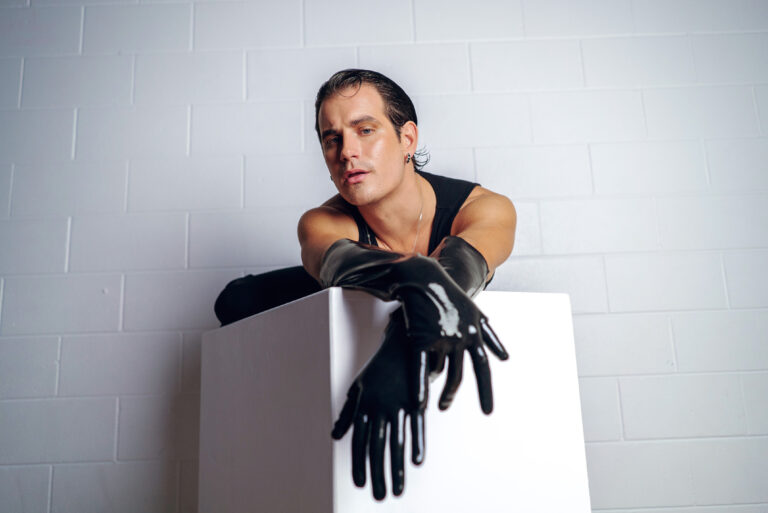A group of friends who decided to continue dancing after college now run a major professional touring production and more.
AATMA students perform in their 2014 recital, “Odyssey.”
“I never anticipated dancing as my career,” says Amit Shah, the founder and creative director of AATMA Performing Arts, named after the Sanskrit word for soul. Shah was a pre-med major at Rutgers University when he realized he wasn’t ready to let go of his creative side just yet. “I felt I had more to offer the world than a medical degree,” he says.
And he wasn’t alone. He recruited friends who all shared his passion for dance, without being on a professional track. What began as a small troupe in 2010 has now become a large-scale organization. The Bollywood and Indian dance company is based in New Jersey, with outposts in New York City and Los Angeles. They offer dance classes for kids and adults and produce a major touring show, Mystic India.
Assistant creative director Kruti Shah (no relation to Amit) majored in evolutionary anthropology in college. “I’d danced since I was 6, but in college, dance was more of a hobby,” she says. When Amit reached out to her, she jumped at the chance, and as the organization grew, so did her role within it. “Now I run the school. I teach, I choreograph for the company and I run rehearsals,” she says. “AATMA helped me realize I could make a living with dance and be successful. It changed my whole life.”
Despite the organization’s focus on Bollywood and Indian dance forms, staff and company members have diverse training histories. Some performers and teachers, like Amit, come from a purely Indian dance background. Others, like Kruti, grew up studying ballet, tap, jazz, contemporary, hip hop and other styles. Classes offered reflect this diversity, incorporating Indian and Western styles into almost every session. “We want our students to get the best of both worlds,” Amit says.
Many of the students are Indian-Americans who enjoy Bollywood movies and music and want a cultural experience. They start out taking Bollywood and then become interested in learning other dance styles. The junior and senior troupes perform in a recital showcase each June, as well as in community performances, and they participate in Indian dance competitions such as Naya Andaz and Dance Pe Chance.
The professional company currently has 65 members who perform in local shows and have the opportunity to tour with Mystic India. Pay for local shows is by performance. Since nearly a third of the company members also hold down outside employment, cast and choreography can vary, depending on which dancers are available. Performers in Mystic India commit to a yearlong contract and travel frequently in the U.S. and abroad for as many as 200 shows a year.
AATMA recently launched Bollywood Beats Boot Camp, a one-hour cardio class that is available at select gyms in New Jersey, Manhattan and Los Angeles. And, with AATMA having had a company presence in Los Angeles for more than a year, plans are in the works to open a school on the West Coast.
“Seeing the progress the students make puts a smile on my face,” says Amit. “Plus, one of the biggest compliments I’ve received was having a parent say their child used to be ashamed to be an Indian-American, but through our program, they became more comfortable being themselves. It’s so rewarding to cultivate a new generation in the U.S. that isn’t afraid to share their Indian culture and music and art with other people.” DT
Kathryn Holmes is a writer and dancer based in Brooklyn, NY.
Mystic India: The World Tour ticket sales raise funds for Share and Care Foundation in New Jersey.
Bollywood Basics
You’ve seen it on “So You Think You Can Dance,” but do you really know what Bollywood’s all about? “As a technique, Bollywood is a mix of many different genres,” says Kruti Shah, AATMA’s assistant creative director and the head of the organization’s student programs. “Bollywood is a melting pot of Indian classical forms, hip hop, jazz—and anything else you can think of!”
Because Bollywood has its roots in Indian classical dance, AATMA encourages students to study Indian classical technique. “It’s just like taking ballet is important if you’re doing contemporary and modern,” Kruti explains.
There are eight officially recognized forms of Indian classical dance, each from a different geographical region of the country: bharata natyam, kathak, kathakali, kuchipudi, manipuri, mohiniyattam, sattriya and odissi. “Each style has different hallmarks, including specific hand positions, footwork, even facial expressions,” Kruti says. “All of that is incorporated into Bollywood choreography.” —KH
Photos courtesy of AATMA Performing Arts




